#Rébé
Explore tagged Tumblr posts
Text
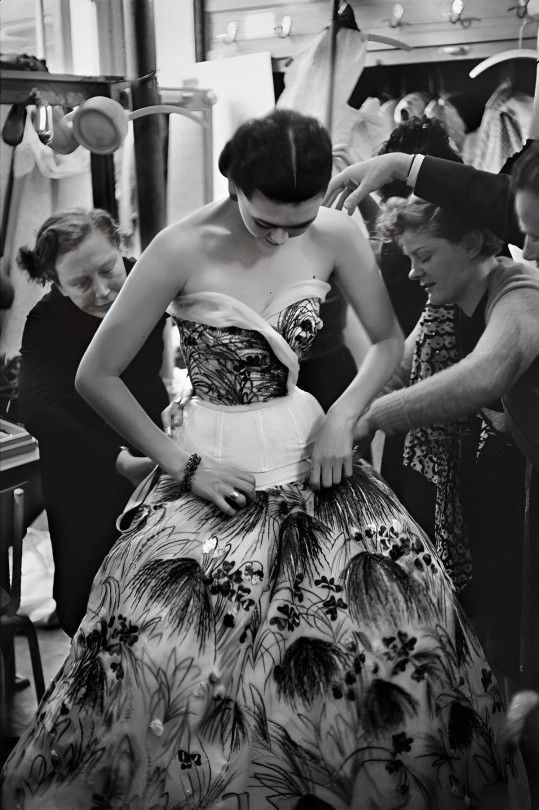
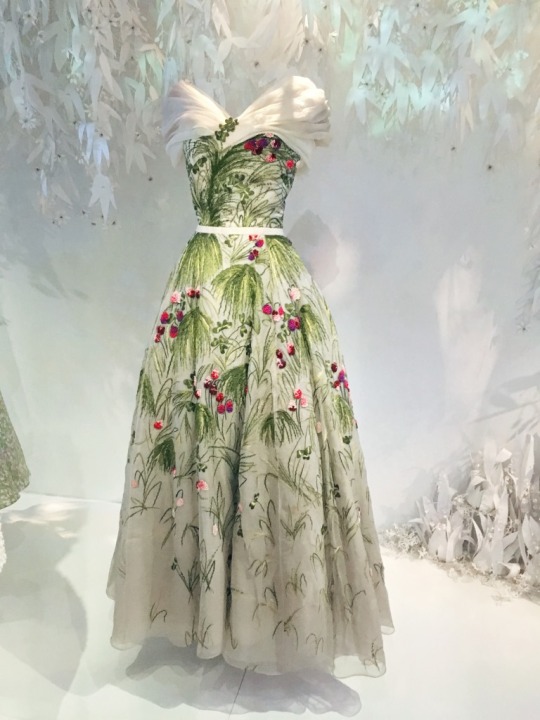
Christian Dior Spring/Summer 1953 Haute Couture Collection. Helped by two dressers, Alla puts on the “May” evening dress before the collection show. Photo Henri Cartier-Bresson.
"May", the grand evening dress in organza embroidered by Rébé.
Christian Dior Collection Haute Couture Printemps/Été 1953. Aidée de deux habilleuses, Alla enfile la robe de grand soir "May" avant le défilé de la collection. Photo Henri Cartier-Bresson.
"May", la robe de grand soir en organza brodé par Rébé.
Ligne Tulipe
#christian dior#collection haute couture#french designer#french style#fashion 50s#1953#spring/summer#printemps/été#ligne tulipe#alla#henri cartier bresson#may#evening gown#robe du soir#organza#rébé
110 notes
·
View notes
Text
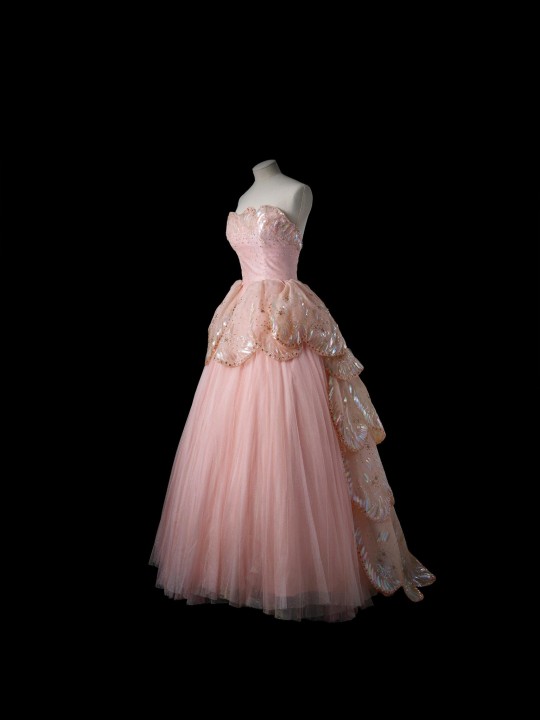
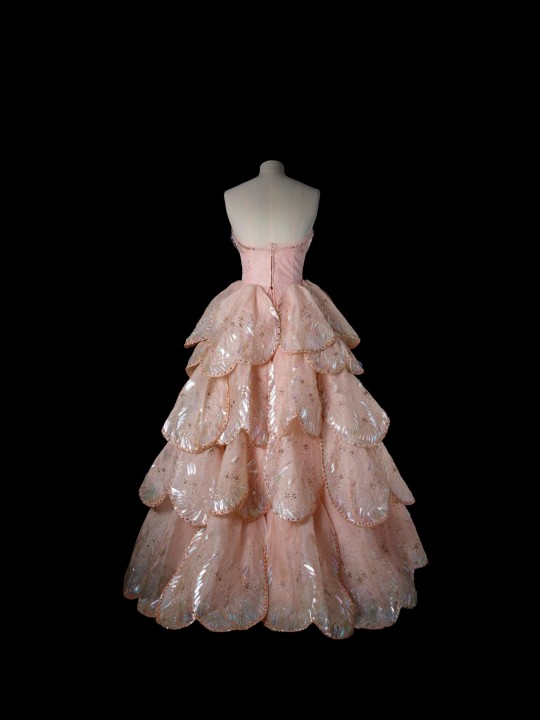
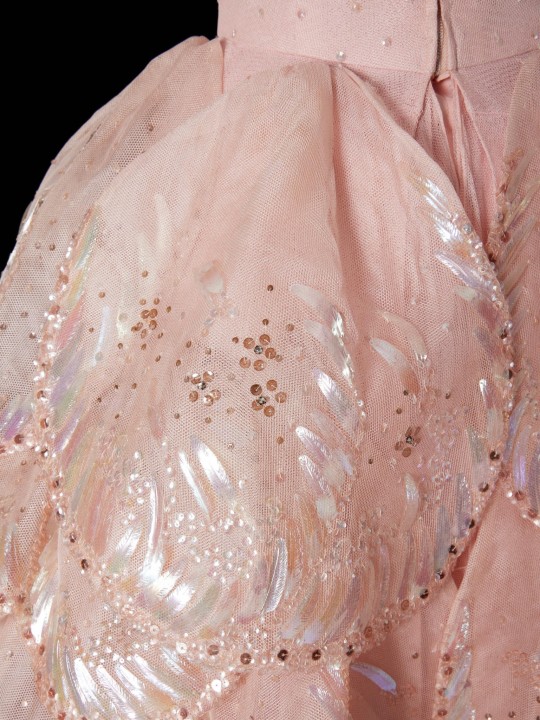
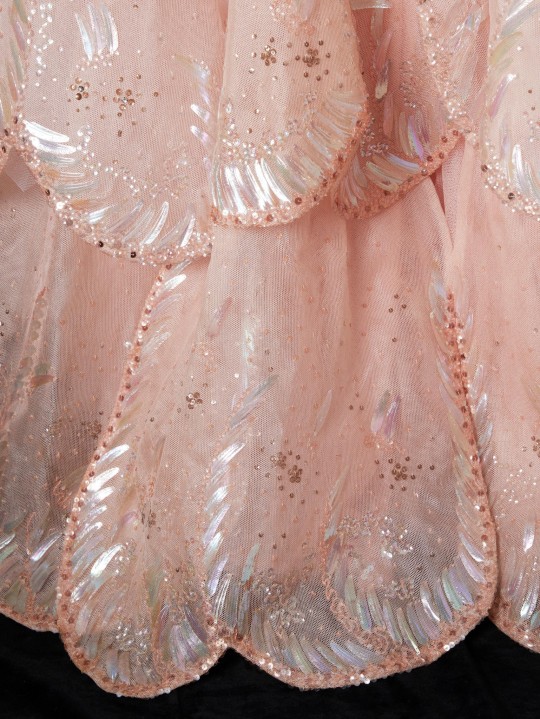
~ Vénus: Autumn/Winter, Milieu du siècle collection.
Designer/Maker: Christian Dior; embroidery by Maison Rébé; authorized copy made by Nanty Frocks, New York
Place of origin: Designed in Paris, produced in New York
Date: 1949-1950
Medium: Viscose (rayon) tulle with pearlised paillettes and sequins
#fashion history#history of fashion#dress#fashion#vintage fashion#vintage clothing#vintage#vintage dress#1950's#1950's dress#1950's fashion#autumn/winter#Milieu du siècle collection#christian dior#Maison Reb#Maison Rébé#1949#1950
3K notes
·
View notes
Photo
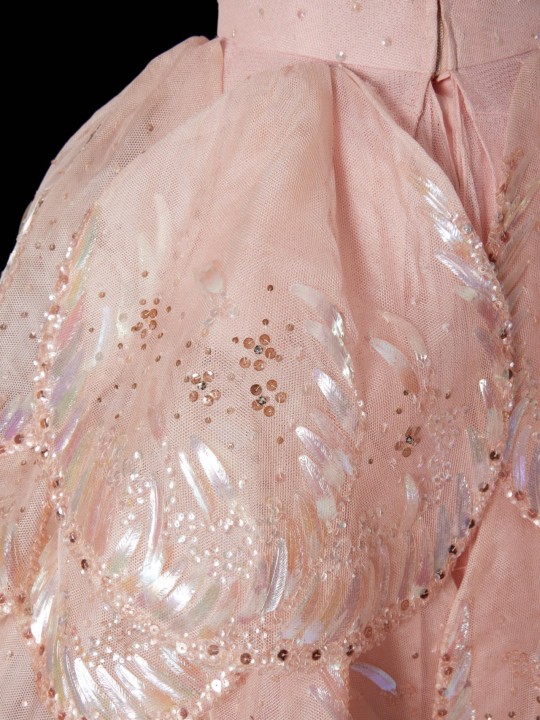
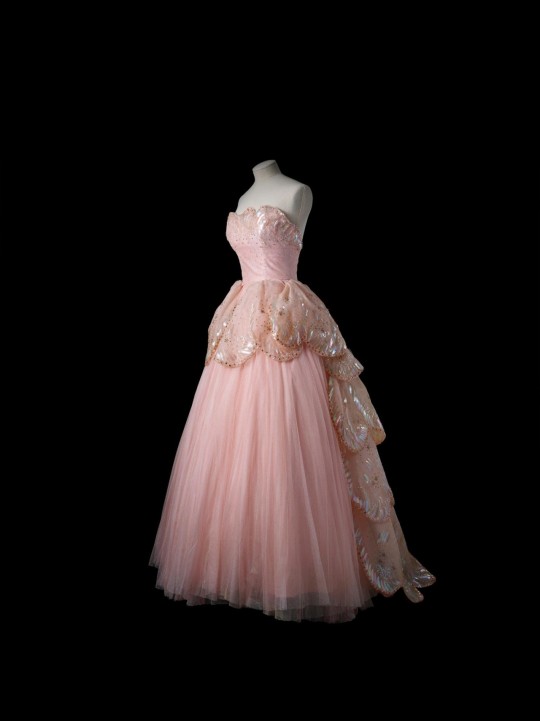

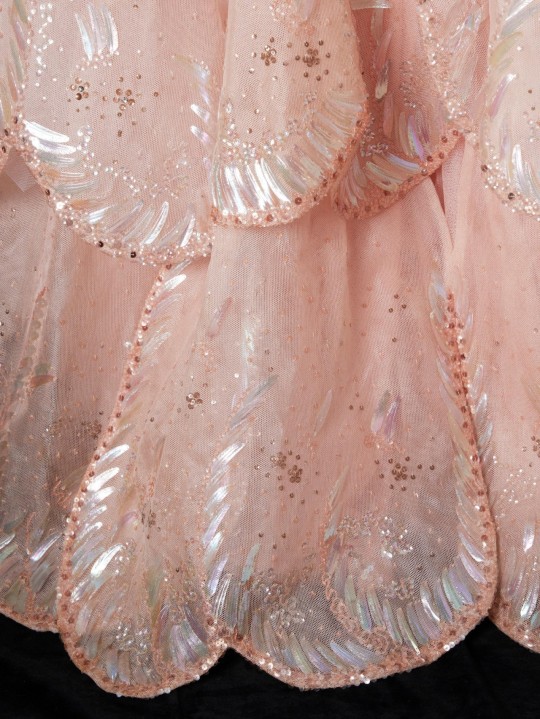
"Vénus" dress by Christian Dior in viscose tulle with pearlised paillettes and sequins embroidered by Maison Rébé, authorized copy made by Nanty Frocks New York, 1949-50.
183 notes
·
View notes
Text














Rébé Broderies Haute Couture
Nadia Albertini
Gorkuff Gradenigo, Montreuil 2021, 256 pages, 22,5x28,5cm, ISBN 978-2-3540-310-3
euro 80,00
email if you want to buy [email protected]
René Bégué (1887-1987), est à l’origine de Rébé, dont les broderies vont alimenter les créateurs dans le domaine de la haute couture pendant plus d’un demi siècle. René Bégué est un dessinateur de grand talent et un coloriste génial, animé par le goût du faste qui a appris son métier auprès de Poiret et Paquin. Andrée Pichard, que René rencontre au début des années 1920 et qui deviendra son associée et sa femme, a commencé sa carrière comme modiste et possède une excellente connaissance des tissus et a un don particulier pour un agencement et désinhibé des matières. Ensemble ils forment un duo exceptionnel qui va irriguer les plus grandes maisons de haute couture de créations éblouissantes. Rébé est une véritable pépite de la haute couture et du patrimoine textile français, encore inconnu du grand public mais dont le nom résonne comme un mythe chez les couturiers, plus de cinquante ans après la fermeture de l’atelier. En étudiant les croquis, échantillons, les photographies, les modèles conservés dans les archives privées et publiques, l’auteur, Nadia Albertini, retrace pour nous cette histoire fascinante. Pour cela, elle a puisé ses sources dans les magazines de mode de l’époque (Vogue, L’Officiel de la Mode, Harpers’ Bazaar, etc.), dans les archives laissées par Rébé au musée des Arts Décoratifs de Paris, au musée du Pays rabastinois, dans celles conservées par les maisons Balenciaga, Dior, Fath, Givenchy, Lanvin, Roger Vivier, Swarovski, Yves Saint Laurent… Nadia Albertini est historienne de la Mode. Elle-même brodeuse, elle collabore avec les plus grandes maisons de couture actuelles… Les recherches qu’elle a menées sur Rébé depuis presque vingt ans l’ont également conduite à rencontrer neuf des anciens collaborateurs du maître brodeur. Leurs témoignages nous plongent dans l’ambiance des ateliers des métiers d’art de l’époque et nous éclairent sur les méthodes et techniques uniques en usage alors.
19/09/24
#Rebé#RenéBégué#NadiaAlbertini#broderies Haute Couture#Balenciaga#Dior#Givenchy#Lanvin#YSL#Fath#fashion books#fashionbooksmilano
0 notes
Photo

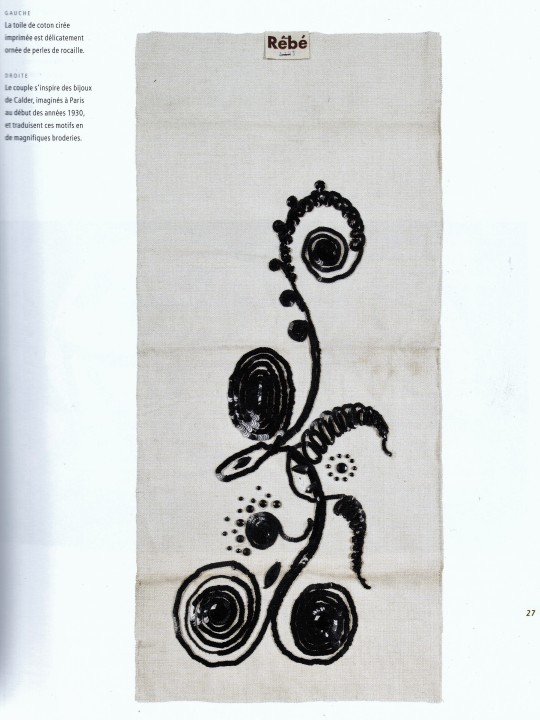
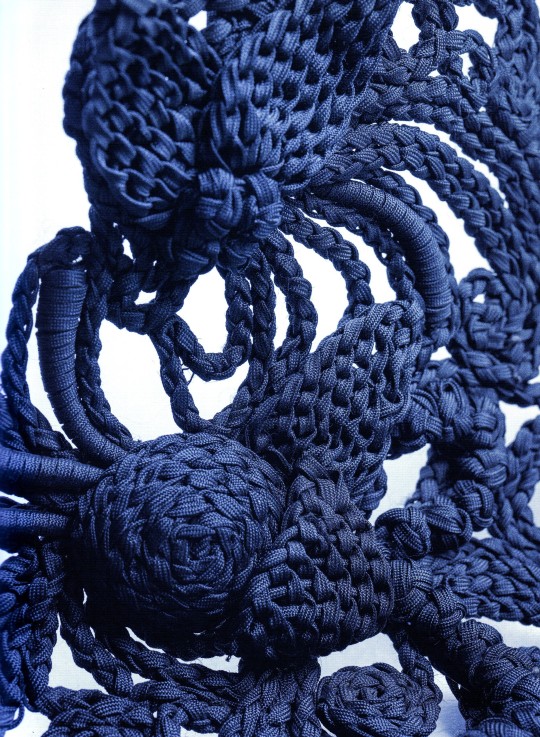


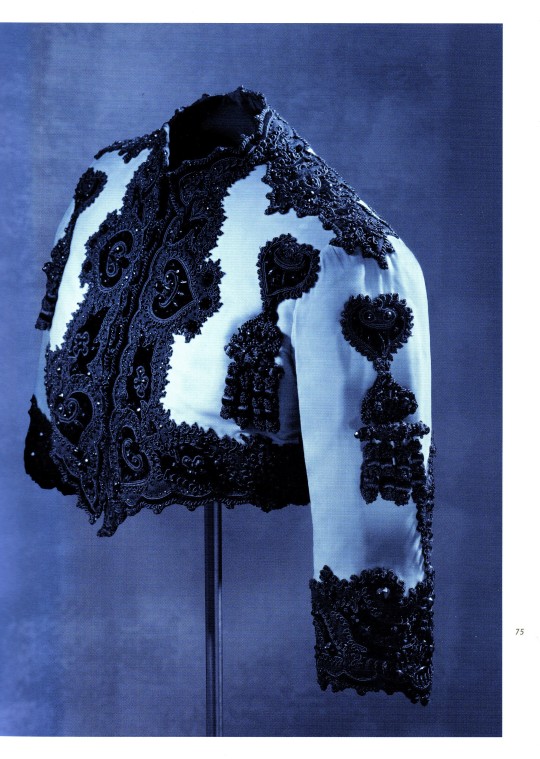
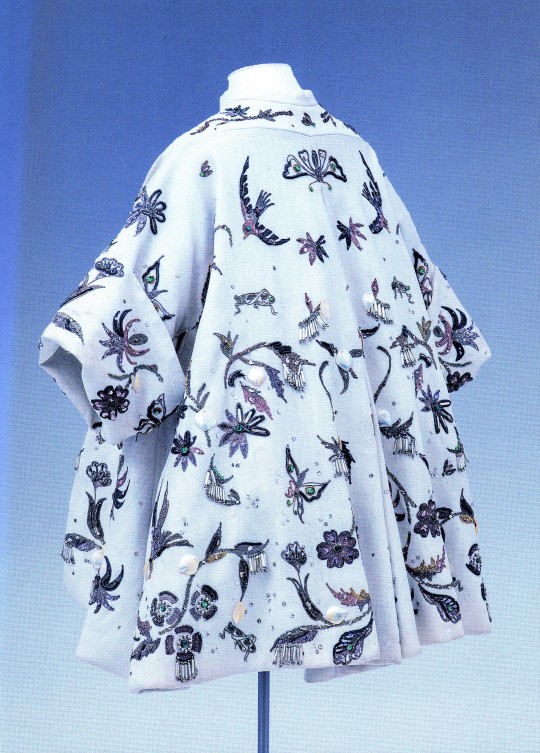
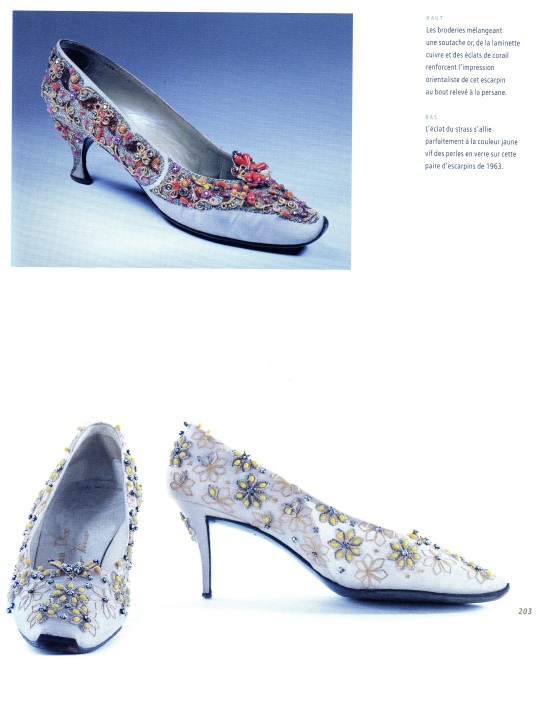
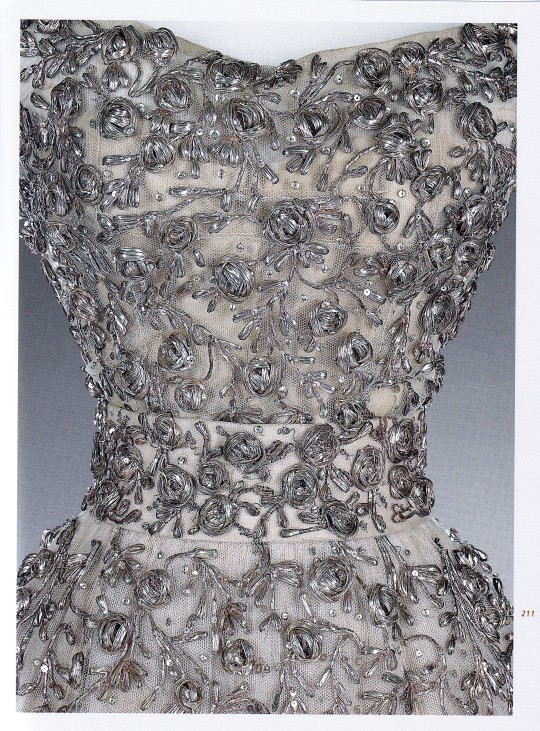

Rébé
Broderies Haute Couture
Nadia Albertini
Gourcuff Gradenigo, Montreuil 2021, 256 pages, 29x23 cm., environ 300 illustrations, ISBN 9782353403103
euro 89,00 *
email if you want to buy [email protected]
René Bégué (1887-1987), est à l'origine de Rébé, dont les broderies vont alimenter les créateurs dans le domaine de la haute couture pendant plus d'un demi siècle. René Bégué est un dessinateur de grand talent et un coloriste génial, animé par le goût du faste qui a appris son métier auprès de Poiret et Paquin. Andrée Pichard, que René rencontre au début des années 1920 et qui deviendra son associée et sa femme, a commencé sa carrière comme modiste et possède une excellente connaissance des tissus et a un don particulier pour un agencement et désinhibé des matières. Ensemble ils forment un duo exceptionnel qui va irriguer les plus grandes maisons de haute couture de créations éblouissantes. Rébé est une véritable pépite de la haute couture et du patrimoine textile français, encore inconnu du grand public mais dont le nom résonne comme un mythe chez les couturiers, plus de cinquante ans après la fermeture de l'atelier. En étudiant les croquis, échantillons, les photographies, les modèles conservés dans les archives privées et publiques, l'auteur, Nadia Albertini, retrace pour nous cette histoire fascinante. Pour cela, elle a puisé ses sources dans les magazines de mode de l'époque (Vogue, L'Officiel de la Mode, Harpers' Bazaar, etc.), dans les archives laissées par Rébé au musée des Arts Décoratifs de Paris, au musée du Pays rabastinois, dans celles conservées par les maisons Balenciaga, Dior, Fath, Givenchy, Lanvin, Roger Vivier, Swarovski, Yves Saint Laurent... Nadia Albertini est historienne de la Mode. Elle-même brodeuse, elle collabore avec les plus grandes maisons de couture actuelles... Les recherches qu'elle a menées sur Rébé depuis presque vingt ans l'ont également conduite à rencontrer neuf des anciens collaborateurs du maître brodeur. Leurs témoignages nous plongent dans l'ambiance des ateliers des métiers d'art de l'époque et nous éclairent sur les méthodes et techniques uniques en usage alors.
30/10/21
orders to: [email protected]
ordini a: [email protected]
twitter: @fashionbooksmi
instagram: fashionbooksmilano, designbooksmilano tumblr: fashionbooksmilano, designbooksmilano
#Rébé#René Bégué#broderies#ricami#haute couture#Balenciaga#Dior#Fath#Givenchy#Lanvin Roger Vivier#YSL#embroideries.#fashion books#fashionbooksmilano
25 notes
·
View notes
Text
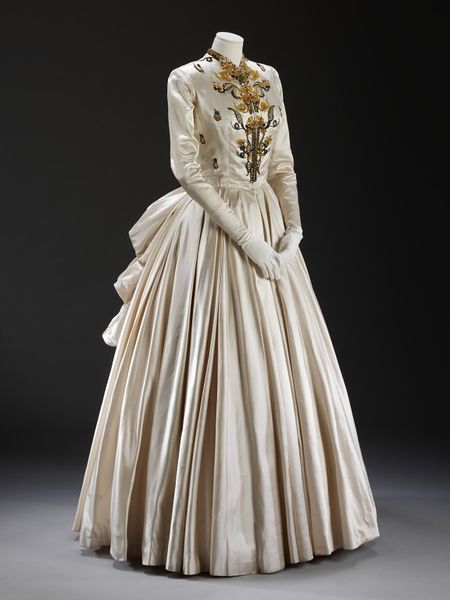
Look at this. Just look at it. Go on. Frocking fabulous by Jacques Fath, embroidered by Rébé, 1948. Via the V&A.
8 notes
·
View notes
Text
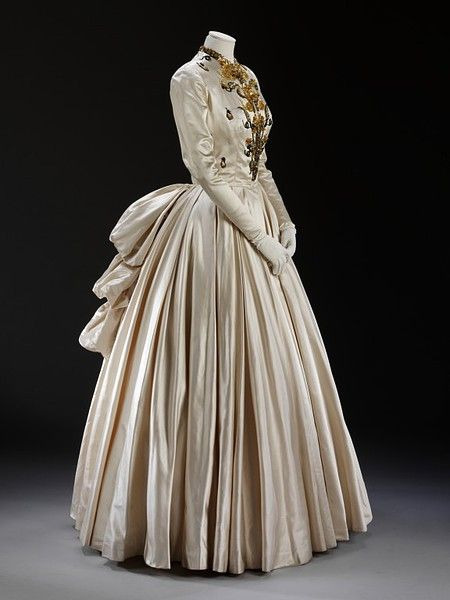
Full length evening dress in silk satin and petticoat, designed by Jacques Fath, embroidered by Rébé, Paris, 1948
6 notes
·
View notes
Photo
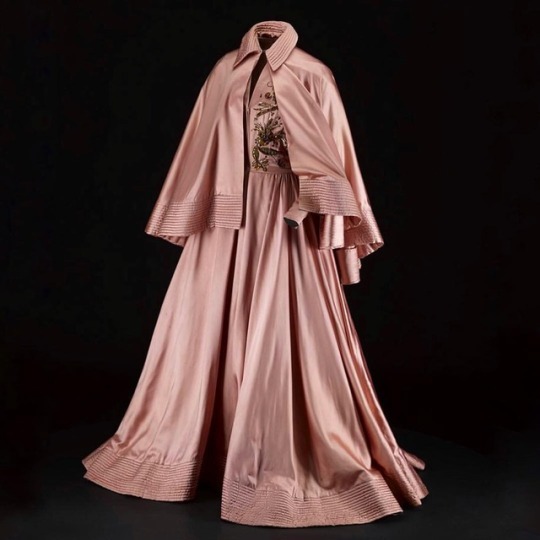
Jacques Fath | Ballgown and Cape | c. 1948 ・・・ This exquisite ballgown was likely embroidered by Rébé, one of a dozen great Parisian embroidery ateliers of the period alongside Lesage and Vermont. It was Rébé who Dior chose to embroider his 1947 New Look collection, which was instrumental in reviving the French luxury industries. Once an haute couture design has been conceived, the next step is to select the textile, followed by the choice of buttons, trimmings and embroidery. Embroidery houses designed their collections in response to the current season and sent samples to the couture houses. Once sold, a design was exclusive to that salon. Exclusivity is paramount in the world of haute couture. The embroidery houses would produce as many different samples as they could in order to appeal to the tastes of as many couturiers as possible and ensure sales. Designs would be sampled on a variety of fabrics of different textures and weights such as gauze, satin, organza and tulle, to enable them to propose their creations. This type of embroidery work was – and still is – considered the perfect balance between art and craft. With each glass bead and paillette or sequin applied individually, such embellishment required meticulous patience. ・・・ #historicalfashion #fashion #mode #moda #historyoffashion #vintagefashion #vintage #defunctfashion #couture #jacquesfath @nationalmuseumsscotland https://www.instagram.com/p/BqLgoo9gSYk/?utm_source=ig_tumblr_share&igshid=1oiy8bwte7i55
#historicalfashion#fashion#mode#moda#historyoffashion#vintagefashion#vintage#defunctfashion#couture#jacquesfath
115 notes
·
View notes
Text

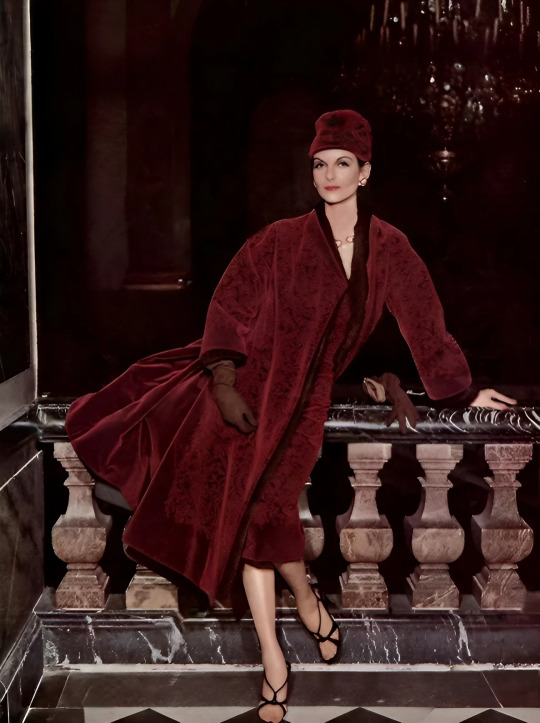
US Vogue November 1, 1955
"Samarcande"
Christian Dior Haute Couture Collection Fall/Winter 1955-56. Anne Sainte-Marie wears a ruby velvet coat with a stiff tracery of embroidery - a coat with mink collar, sheath, and depressed helmet. Velvet by Bodin, embroidery by Rébé. DIor-Delman sandals. The setting: Marie Antoinette's staircase at the Palace of Versailles, and quite atmospheric, a burst of Dior's "Miss Dior" perfume.
Christian Dior Collection Haute Couture Automne/Hiver 1955-56. Anne Sainte-Marie porte un manteau de velours rubis avec un entrelacs rigide de broderies - un manteau à col de vison, fourreau, et casque enfoncé. Velours de Bodin, broderies de Rébé. Sandales DIor-Delman. Le décor : l'escalier de Marie-Antoinette au château de Versailles, et tout à fait atmosphérique, un éclat du parfum "Miss Dior" de Dior.
Photo Henry Clarke vogue archive
#us vogue#november 1955#fashion 50s#1955-56#fall/winter#automne/hiver#haute couture#christian dior#anne st. marie#henry clarke#evening coat#miss dior#versailles#rébé#bodin#delman#embroidery#broderie#velvet#velours#samarcande#ligne Y
11 notes
·
View notes
Text
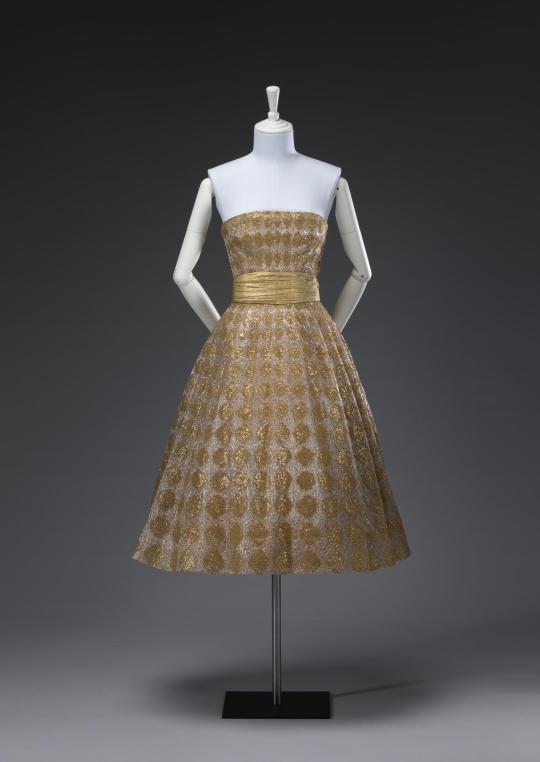
• Perichole, evening dress.
Date: 1956 {Magnet (Aimant) line, autumn-winter 1956–57}
Designer/Maker: Christian Dior; Rébé (Embroidery house)
Medium: Nylon, silk, metallic thread, plastic (sequins), metal.
#1950's clothing#1950's dress#1950's fashion#1950's#vintage#vintage clothing#vintage fashion#vintage dress#history of fashion#fashion history#fashion#dress#Evening dress#perichole#christian dior#rébé#1956#1957#autumn-winter
184 notes
·
View notes
Text
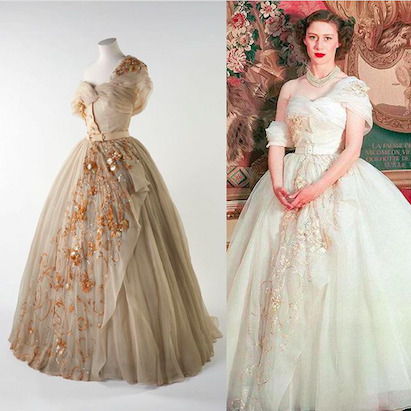
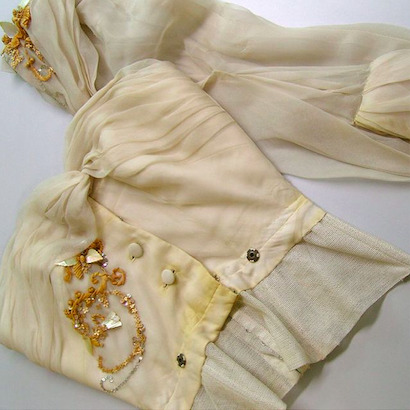
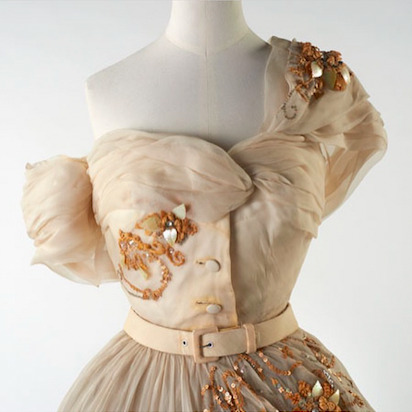
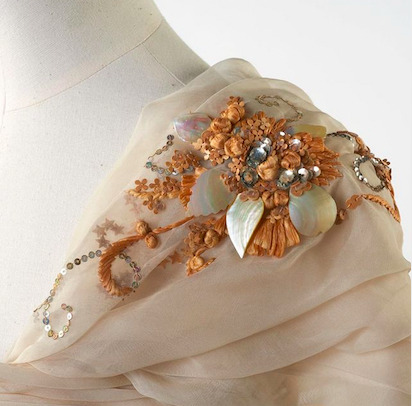
"Robe" de Christian Dior avec des broderies de Rébé pour la Princesse Margaret d'Angleterre photographiée par Cecil Beaton pour son 21ème anniversaire, 1951.
5 notes
·
View notes
Photo

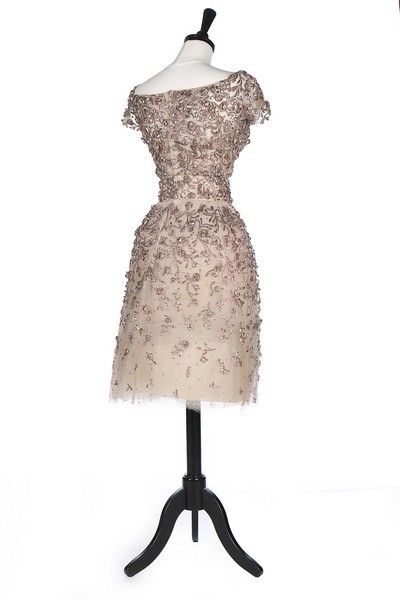
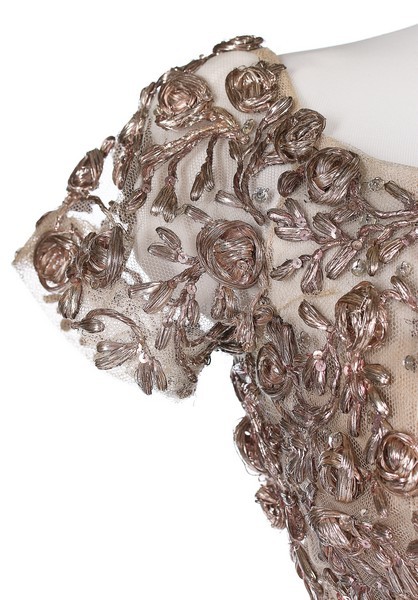
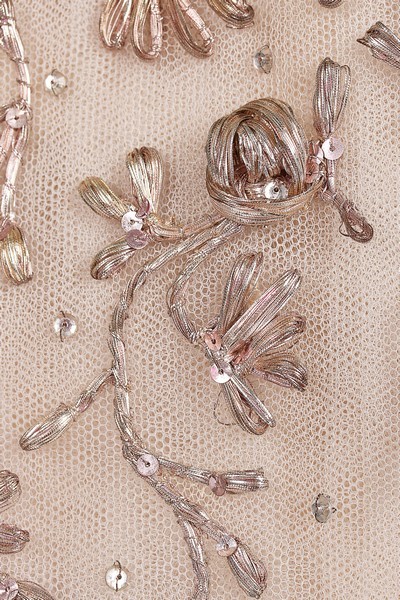
An Yves Saint Laurent for Christian Dior couture embroidered cocktail dress, Autumn-Winter, 1958, labelled and indistinctly numbered, with integral boned corset, cap sleeves, the pale pink tulle ground embroidered by Rébé in high relief with pink metallic silver thread coiling roses and foliage and spangled with rhinestones, with matching embroidered belt, layered organza, tulle and silk petticoats
#fashion history#historical costume#Yves Saint Laurent#Christian Dior#cocktail dress#1958#20th century#tulle#silver thread#silk
464 notes
·
View notes
Photo
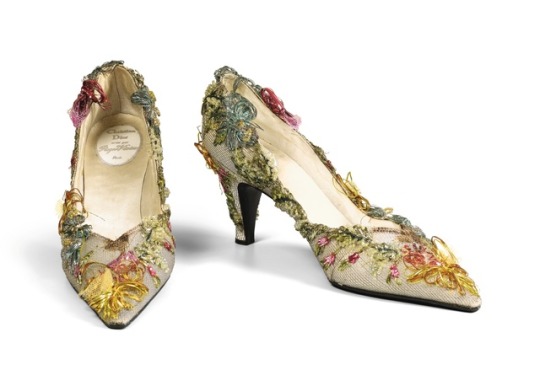
Christian Dior par Roger Vivier, 1955-1957
A pair of satin evening shoes with metal thread embroidered by Rébé
786 notes
·
View notes
Photo
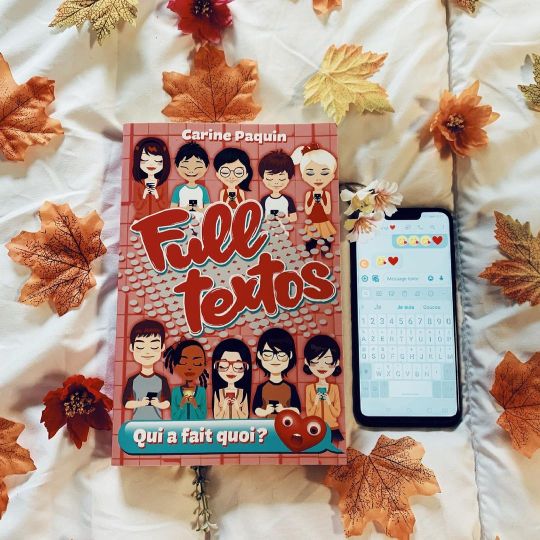
𝗙𝘂𝗹𝗹 𝘁𝗲𝘅𝘁𝗼𝘀 𝘁𝗼𝗺𝗲 𝟭 • 𝗖𝗮𝗿𝗶𝗻𝗲 𝗣𝗮𝗾𝘂𝗶𝗻 . "C’est quand une mauvaise herbe est petite qu’il faut l’arracher, car si on la laisse s’enraciner, elle risque de s’emparer de tout le potager" . Nous suivons Jade qui, ne va pas à l’école pendant une semaine. Elle est contagieuse et a plein de boutons partout qui lui font mal {quelle horreur, des boutons qui piquent} ! Elle risque de s’ennuyer durant cette semaine alors elle décide de créer un groupe pour discuter avec ses amies (Juju, Rébé et Lou}. Ce n’est pas si facile car elles ne doivent pas se faire prendre en train de texter. Mais croyez-moi il y a pire ! Il y a un voleur de téléphones qui rôdent dans l’école et notre groupe d’amies est visé, qui ça peut bien être ? Quel format original, j’adore ! J’ai beaucoup aimé lire cette histoire sous forme de messages, ça rend l’aventure plus réaliste et j’avais presque l’impression de faire partie du groupe. L’histoire est facile, le texte est gros et la mise en page nous donne cette impression de légèreté durant notre lecture. J’ai aussi adoré les petites notes de l’auteure entre chaque chapitre pour nous présenter la situation et les personnages. C’est une très belle histoire qui m’a fait rire, j’ai vraiment passé un bon moment ! . Plutôt sms ou appel ?📱 ________________________ #Bookstagram ⟡ #Bookstagramfrance ⟡ #Bookstagrammer ⟡ #Bookaddict ⟡ #Litteraturejeunesse ⟡ #Romanjeunesse ⟡ #Passionlecture ⟡ #Lectureaddict ⟡ #Livreaddict ⟡ #Livraddict ⟡ #Instalecture ⟡ #Sms ⟡ #Fulltextos ⟡ #CarinePaquin @carine_paquin_auteure @kenneseditions https://www.instagram.com/p/CNuAOGlnkwQ/?igshid=8aqkuq4v46cl
#bookstagram#bookstagramfrance#bookstagrammer#bookaddict#litteraturejeunesse#romanjeunesse#passionlecture#lectureaddict#livreaddict#livraddict#instalecture#sms#fulltextos#carinepaquin
0 notes
Text
Counter-Terrorism Financing's International Best Practices and the Law - new book by Dr. Nathalie Rébé
Counter-Terrorism Financing’s International Best Practices and the Law – new book by Dr. Nathalie Rébé
Counter-Terrorism Financing International Best Practices and the Law Series:
Nijhoff Law Specials, Volume: 98 Author: Dr. Nathalie Rébé
In Counter-Terrorism Financing: International Best Practices and the Law, Nathalie Rébé, offers a new comprehensive framework for CTF worldwide and reviews the strengths and weaknesses of current regulations and policies.
Both accessible, interesting and…
View On WordPress
0 notes
Text
Couture à la Canadienne: A Dior Exhibition Opens at the Royal Ontario Museum

With “Christian Dior, Couturier du Rêve” at Musée des Arts Décoratifs in Paris continuing its blockbuster run, the heaving queue outside the museum as daily confirmation, one might wonder what a noticeably smaller exhibition an ocean away could contribute to Dior as a cultural experience. Turns out, quite a bit. When “Christian Dior” at the Royal Ontario Museum in Toronto opens this weekend, the presentation of 38 early designs from its own collection plus dozens of accessories and heritage items on loan will shed light not just on the master’s approach to constructing a coat or dress, but also on the women who purchased and wore them. Curated by Dr. Alexandra Palmer, the ROM’s Nora E. Vaughan senior curator, the show reveals a treasure trove of donations, which in turn puts a local spin on an otherwise Parisian narrative. One diminutive dress was created for a girl’s bat mitzvah; another was bought for a honeymoon in Jamaica. Toronto’s mid-century socialites had Dior, Norman Hartnell, and Balenciaga in their closets, even if they weren’t traveling abroad.

Photo: Courtesy of the Royal Ontario Museum The pieces Palmer has selected, on view together for the first time, all date back between 1947 and 1957, the brief but pivotal period between the founding of the maison and Monsieur Dior’s death. Devotees will recognize some of the silhouettes, if not their names: There’s Palmyre (1952) with its narrow bodice and medley of golden thread and Swarovski embellishment; Delphine (1956) a crimson dress boasting a signature Dior construction; and Auteuil (1994) a suit that feels quintessentially chic with its wasp waist and padded hips. But if the hidden corsets, innovative seams, and darts signal the fine details that preoccupied him in the studio, the exhibition reveals that his approach to disseminating the collections in a transatlantic postwar economy was just as telling. Palmer, who has already written about this in Dior: A New Look, A New Enterprise (1947–57) managed to interview several of the donors while they were still alive, which means she is prone to serving up charming anecdotes alongside the specificities of Rébé embroidery of Robert Perrier satin.

Photo: Courtesy of the Royal Ontario Museum “We don’t really need another great Dior exhibition with all the fabulousness. There’s one in Paris. I cannot do that; I do not have the resources. But I can drill down; I’m an academic and this what I love—to unpack all this stuff and explain things from a different point of view,” she said last week while the looks were huddled together in a workroom, still under their protective covers. Perhaps surprisingly, the Toronto clientele could purchase Dior right from its debut, thanks to the defunct department store Eaton’s followed by an exclusive arrangement with Holt Renfrew, which is the show’s title sponsor. Back then, with ready-to-wear not yet in place, retailers staged fashion shows for special clients with couture designs sent over from Paris. Other looks were also manufactured as made-to-order by license, precisely according to the atelier’s specifications. Additionally, there were the “bonded models,” which arrived in Canada via American stores a few months after the couture shows. In 1956, Mrs. John David Eaton (familiarly known as Signy) donated her Nocturne two-piece dinner dress to the ROM, before the museum, which is best known for its massive dinosaur fossils and indigenous artifacts, had begun collecting couture. She also donated a lustrous jacket lined with guipure lace from Spring ’49 that she would have worn over a black evening dress; Monsieur Dior had named it the Tour Eiffel.

Photo: Courtesy of the Royal Ontario Museum As for the striking plaid dress, called Batignolles after the Parisian neighborhood, it belonged to Lillian Weiss, who is now 97. The silk taffeta came from Soieries F. Ducharne, and Dior aligned the pattern impeccably while adapting a redingote style to his new volumes. Indeed, Weiss donned her dress more often as a coat, as a photo taken outside a nightclub in the town of Cambridge, Ontario, suggests. Incidentally, the same design was worn by Mexican screen siren María Félix. The violets embroidered on Abraham on Avril, a two-piece number from 1955, suggest ideal garden party attire, not to mention Dior’s ongoing love of flowers. That design belonged to Mrs. Philippe Hecht (known as Frederica), a couturier who came to Toronto from Milan upon being hired by yet another defunct department store, Simpson’s, before opening her own boutique. “It’s perfectly made with a strapless corset with a re-appliquéd cummerbund that’s part of the skirt,” Palmer explained. Of the dramatic Isabelle gown from 1948, Palmer said this gift from Mrs. David Meltzer (if not already obvious, the donors’ names remain a reflection of their time) looks particularly fantastic when laid out flat, thus highlighting Dior’s double circle design. “What the heck he was thinking of when he made these clothes?” she exclaimed, noting how it underscored his use of historical dressmaking. And while the three dresses grouped together might appear as though intended for a wedding, Elaine Roebuck can confirm she wore the medium-size one for her bat mitzvah in 1957, with the other two worn by her mother and sister. In a video prepared for the show, she says, “I didn’t know Dior from a hole in the ground; having a date was important.” In fact, her mother’s dress was adapted from a 1956 wedding dress, whereas hers was made to order by Holt Renfrew’s Montreal atelier, based on a design from Paris. Two other mentions: the cocktail dress striped with bands of Valenciennes lace. Palmer pointed out how Dior achieved remarkable fluidity in the skirt by conceiving it as quadrants, while also noting the modernity of the leather belt. This was what Ann Levitt, the daughter of Holt Renfrew’s president at the time, Alvin Walker, wore on her honeymoon at Tower Isle, Jamaica, and might be the only one of its kind in an institution, according to Palmer. She believes the black tiered dress from 1947, known as Chandernagar after a town in West Bengal, was the couturier’s way of channeling the romantic ideal of a region still under French rule, noting how the bodice and short sleeves suggest a choli blouse worn under a sari. “It absolutely encapsulates Dior’s New Look,” she says, adding that this could have been the dress he presented when Neiman Marcus awarded him a fashion “Oscar” in Dallas. Apparently, Marlene Dietrich wore a modified version (less décolleté) for a shoot in either Vogue or Harper’saround the same time. When asked whether these dresses with their stories speak to her, Palmer said no, at least not in the fantastical sense of them seeming alive. “I always tell my students and reviewers that the clothes don’t actually speak; they’re mute. But we interpret them. And we bring our baggage to them. And what is that? What are the questions they pose? It’s an interesting thing, because people do get emotions from beautiful things and fashion exhibitions are interesting, because you have an audience that can immediately engage with things and can project on them.” In that spirit, speaking personally, I returned to Paris before having the chance to see the exhibition installed. Upon receiving a photo of the accessories case, I marveled at the secret jewelry compartment emerging from a Dior purse. But I felt a special connection to the black Dior gloves, which belonged to Rose Torno, the wife of my father’s uncle (go figure, the lawyer with a love of fashion happened to favor Balenciaga). Most visitors to this show will not know the women who owned these beautiful specimens, yet they will find evidence that Dior cast his spell far, if not wide. “Christian Dior” at the Royal Ontario Museum in Toronto runs from November 25 until March 18, 2018. For more information, visit www.rom.on.ca. Read the full article
0 notes